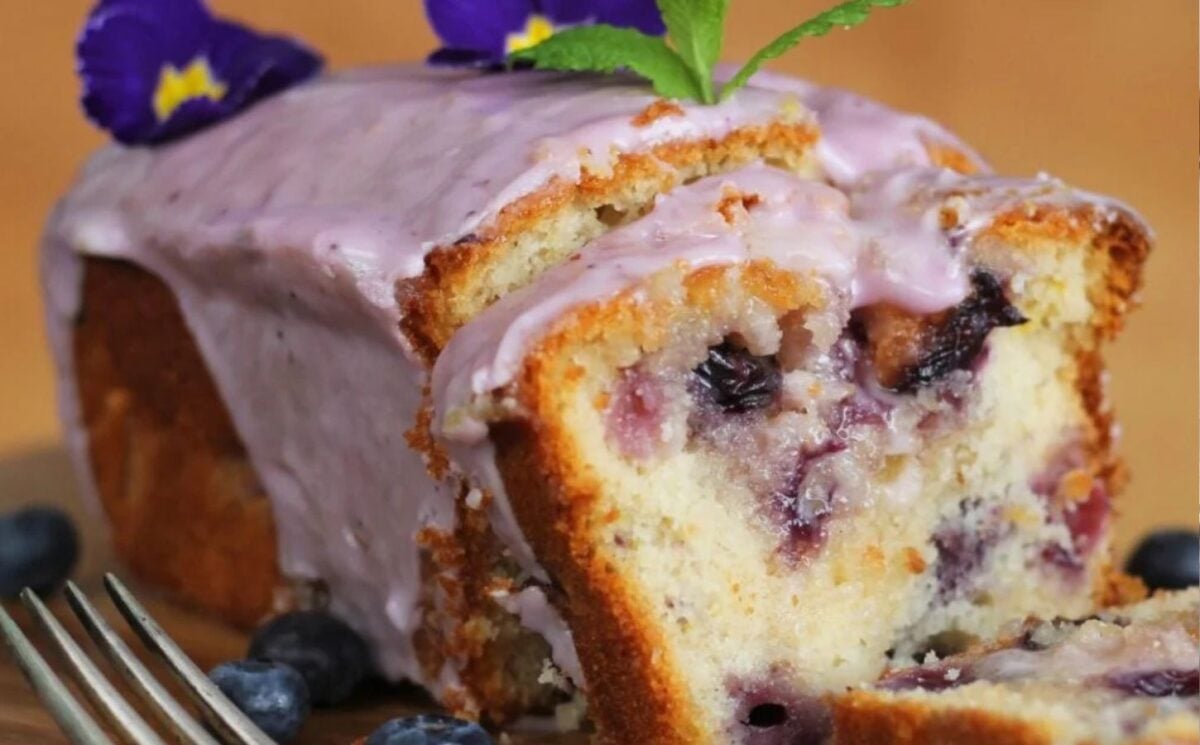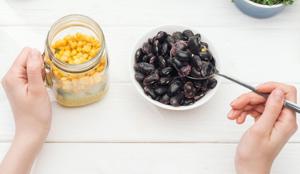Making sizzling breakfast pork at home is relatively easy to do. There are plenty of different ways to cook bacon , and it's worth experimenting with different cooking methods. Honing your technique well enough that you get the exact bacon you want every time, though? That can be a years-long journey of taking notes and making adjustments.
Maybe you're on a quest to perfectly mimic restaurant bacon . Maybe you just want some consistency. For our money, baking bacon in the oven cooks the most amount of bacon, and the most uniformly.

The internet is full of tips and tricks for excellent oven-baked bacon. I've been honing my own oven-baked method that I learned from my mother-in-law for years, getting each aspect down so well that it's basically muscle memory. Bonus: Doing bacon in this way frees my hands up and allows me to do other things in the morning, like empty the dishwasher, make coffee, and scramble eggs.
Here are some tips and things to keep in mind when baking bacon. 1. Figure out your preferred bacon Center-cut or thin-cut? Uncured or low sodium? What kind of bacon you go for while in the grocery store affects how the end product turns out.
Center cut is up to 30% less fatty, thanks to being sliced closer to the bone. Thicker cut bacon is going to be chewier, whereas thin-cut will crisp up. Uncured bacon is a slightly misleading name, since all bacon needs to be cured.
All uncured means is that synthetically sourced nitrates and nitrates were not used in the process. The synthetic stuff gives bacon its trademark color and help preserve the bacon for longer, but if you buy uncured, the bacon is a little more natural. Personally, I opt for low sodium, cured bacon.
One nutrition tip: bacon is naturally very salty, and my family has not regretted switching to low sodium. In fact, I really enjoy the balance created with a few pinches of freshly ground black pepper on low sodium bacon. If one of your main goals when preparing a meal is a balance of seasonings, low sodium bacon with a little bit of pepper sprinkled over the top achieves the exact right balance of salt and pepper.
2. Choose a long enough sheet pan To bake bacon, you need a relatively lengthy sheet pan with a rim. The strips shouldn't be touching, so you'll want enough space for the bacon to stretch out.
Bacon is long, and loves doing Stretch Armstrong impressions when peeled from a pack. The best thing to do is find the longest pan your oven can handle and use that. Width helps, too.
If you're cooking for four people or less, you should be able to get by with a pan that is as wide as a standard sheet of aluminum foil or parchment paper. But if you're cooking for a crowd, and need to make the whole pack, it's best to either cook in batches or opt for a wider pan. A rimmed sheet is important, because while cooking in the oven helps prevent spatter, you don't want all that grease dripping into the bottom of your oven.
That's not just a waste of precious bacon grease, that's a fire hazard. Choose a rimmed sheet pan, and be safe while you make breakfast. 3.
Aluminum foil or parchment paper makes for easier cleanup A major downside of bacon is the leftover grease. Not that leftover grease doesn't have its applications. We're talking more about how it can get everywhere, clog drains, or be difficult to get completely off of pans.
That's why it's almost essential to line your pan with either aluminum foil or parchment paper before laying out the bacon. Crispy bacon comes from aluminum foil or parchment paper, since the bacon is essentially balanced in its own hot grease. Having this layer also makes it easier to pour the leftover grease into a jar for storage.
Gripping the foil or paper on either side, you can maneuver the grease towards the middle. Then it pours easily into a jar. Sure, you might still spill a little.
A safer method is to let the fat cool to room temperature, then scrape the grease into a jar. Either way you do it, there's going to be a little cleanup — either spilled liquid grease or wiping solid fat off a utensil. Even that little bit of cleanup, though, is far less than you'd be doing if you were working sans foil or parchment.
4. Don't let the strips overlap Who doesn't love the visual of a huge pile of bacon, strips layered one after another like firewood? It's an appealing thought: The tastiest part of breakfast is also the most abundant. Not so fast, though.
You really don't want so much bacon that the baking pan is crowded. This is one of the most important parts of the process to be careful about. Maybe you want to cram as many strips onto the pan as possible, but make sure to keep them separated.
The edges of the strips touching is okay. If the bacon is snuggled up like a litter of sleeping puppies in the sheet pan, though, a couple of things can go wrong. First, the bacon can cook unevenly.
You can have nearly blackened parts and barely cooked, chewy parts on the same strip. That's an unpleasant eating experience all around, and it's hard to fix. Second, strips can stick together, resulting in the bacon crumbling when you try to serve.
The uneven cooking will also result in you trying to separate stuck-together pieces to try to get those uncooked sections to brown, and it's just not a good time for you or the pork. 5. Cook the bacon gently We're not quite going for low and slow, here, but a 375-degree oven is all you need.
For crispy bacon that still has a little give — as in, won't shatter when you blot it with a paper towel — my personal sweet spot is 17 minutes at that temperature. If you're cooking between four and 10 strips, like I normally am, this temp and time will let each strip reach its full potential. Each strip lays flat, and enough grease accumulates that the bacon cooks without so much grease piling up that you have to mop up your breakfast.
This isn't the crispiest possible bacon, but it trends more on the crispy side of things than the chewy side. The reason to cook bacon gently is to avoid uneven doneness. Cooking bacon in a hot skillet gives you a satisfying sizzle and maybe some nice charred bits, but it is not uniform.
The oven method is far easier on the pork than a hot skillet, allowing every centimeter of the strip to reach the right doneness at once. A lower oven temperature also means that your whole house smells like bacon faster, and for longer. 17 minutes at 375 is a baseline, though.
Sometimes, you need to take some strips out, and put some back in for longer. Still, the majority of the pork will be ready when that first timer goes off. 6.
Try a wire rack for a cleaner cook This is totally optional. Letting the strips cook directly on the foil allows a grease buildup, which can help the bacon get crispy, but also risks some greasiness. Elevating the bacon a bit lets the grease drip off, giving the end result a cleaner, drier texture.
The bacon still gets crispy. In fact, the wire rack helps air circulate all around the bacon, applying heat evenly everywhere. Personally, I don't use a wire rack every single time.
Using a wire rack dirties another dish, plus I like a little grease on my bacon. However, I find that a wire rack is great if I'm going to be making sandwiches. If I'm already messing around with ingredients like mayo, lettuce, and tomato, then I don't want a ton of liquid pork fat overwhelming the other flavors.
Having a drier slice of cooked bacon allows the other ingredients to play their parts, too. 7. If you want your strips to be extra crispy, try adding flour This one's for anyone who wants to hear their bacon vibrate their skull while they chew.
Friendly reminder: a little goes a long way, here. After you lay the strips on the pan, dust the top with just a few pinches of flour, spreading as evenly as possible. You're not trying to bread your bacon, after all.
You certainly don't want big bubbles or chunks of flour on your meat. The way that this trick works for creating extra crunchy bacon is that the flour will absorb a good amount of the grease while the meat cooks, making the final product incredibly crispy bacon, every time . This is a great thing to do if you're using crumbled bacon to add crunch to another dish.
Say you want to punch up a bowl of beans or greens, or give a plate of Alfredo some texture. The flour will help the bacon stand up to any liquid or sauce. Few things are more disappointing than a dish where you expect bacon to maintain its integrity, only to become a floppy chew toy.
8. Thicker slices need extra time The thicker the bacon, the longer it might take to get to the desired doneness. Sure, you'd like to assume that every strip in the pack is uniform.
That's just not the case. Sometimes, you'll peel bacon out of a standard pack, and the slices will be different levels of thickness. This isn't the end of the world, but it does mean you have to pay attention while you cook.
If your kitchen timer goes off, and some bacon looks like it'll burn if it spends another minute in the oven, but other slices still have light spots? No worries. Pull the done pieces off of the pan and toss the others back in the oven. Check in one- or two-minute intervals to avoid overcooking.
Bacon isn't a food that requires serving right away. Being hot out of the oven isn't necessarily an asset. So let the finished pieces hang out on a paper towel.
The rest will join when they're ready. 9. After cooking, let the bacon rest on a paper towel We get it.
The kitchen timer has gone off. You opened the oven and all of your olfactory senses got hit with a wave of bacon smell. You want to dive in right away, but you've got to let your bacon rest on a paper towel.
This is an essential step. As the grease soaks into the paper towel (you'll want to blot the top side, too), the bacon gets crispier. Not to mention your bacon becomes more pleasant to look at, without all those hot bubbles looking all googly up at you.
Hey, you eat with your eyes first. It's not all about crisp levels, though: Letting bacon rest on a paper towel ensures that when you bite into it, you don't get an overwhelming pop of grease. Don't think we're shaming you for enjoying greasy bacon — we can totally get down with a little throat coat.
There's a line, though, right? You wouldn't spoon grease out of the pan. So go ahead and let cooked bacon rest on a paper towel. 10.
Once it's done resting, you can add a simple glaze for even more flavor Bacon is tremendous on its own, but that doesn't mean you're stuck with one taste. For starters, extra pepper on your bacon is never a bad idea. However, an even better way to kick it up a notch and get delicious results with relatively low effort is to make a simple glaze and brush it on the bacon as soon as you pull it out of the oven.
The glaze only needs somewhere between two and four ingredients, too — it's not like you have to fuss over a huge extra step. A blend of maple syrup and spicy mustard will give you a pleasantly balanced taste of sweet heat. A mix of honey and the hot sauce of your choice works well too.
You can add salt, pepper, or other seasonings to taste. Lightly brush the glaze on the bacon after you've patted it dry with a paper towel, but while it's still warm. Let the glaze set for a couple minutes before serving.
All of the sudden, you're the hero of brunch, a real wizard in the kitchen. 11. Save your grease The grease that accumulates once your bacon is done is absolute gold for cooking potatoes, veggies, or eggs.
The uses for bacon grease are delicious and multitudinous . Frying or sautéing ingredients in bacon grease is a great way to get decadent meaty flavor. Just remember to salt whatever you're cooking in bacon grease slightly less than you usually would, as bacon grease has some salt already.
The best way to store bacon grease is to pour the leftovers into a jar with a tight-fitting lid, ideally a Mason jar. You'll want to do strain the grease through a coffee filter or fine mesh strainer, and you'll want to do this while the grease is warm, but not hot. Keep the grease in the fridge or freezer.
Maybe you or your relatives have always kept bacon grease on the back of the stove, but food safety experts do not recommend this. One nice thing about cooking bacon in the oven is that there are fewer charred bits that end up in the grease than when you fry bacon in a skillet. Those charred bits won't hurt you or anything if you're, say, dumping the grease into a skillet right away to scramble eggs.
Stored, though, they make your grease cloudy and speckled. Best to filter those bits out with a fine mesh sieve before storing..
Food

11 Pro Tips For Cooking Bacon In The Oven

Cooking your bacon in the oven can help you achieve the perfect uniform crispiness and avoid the splattering hot oil that comes with cooking in a frying pan.















